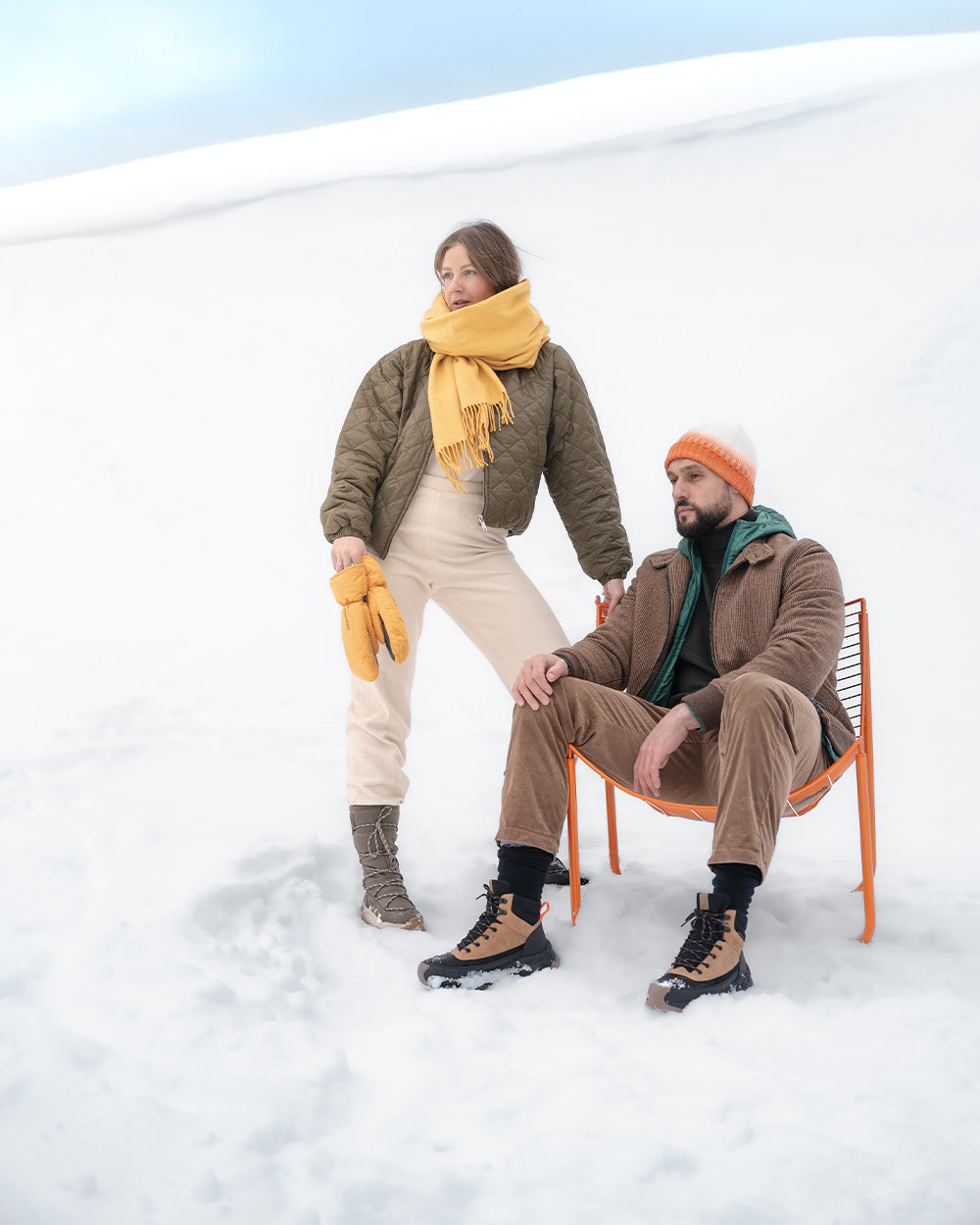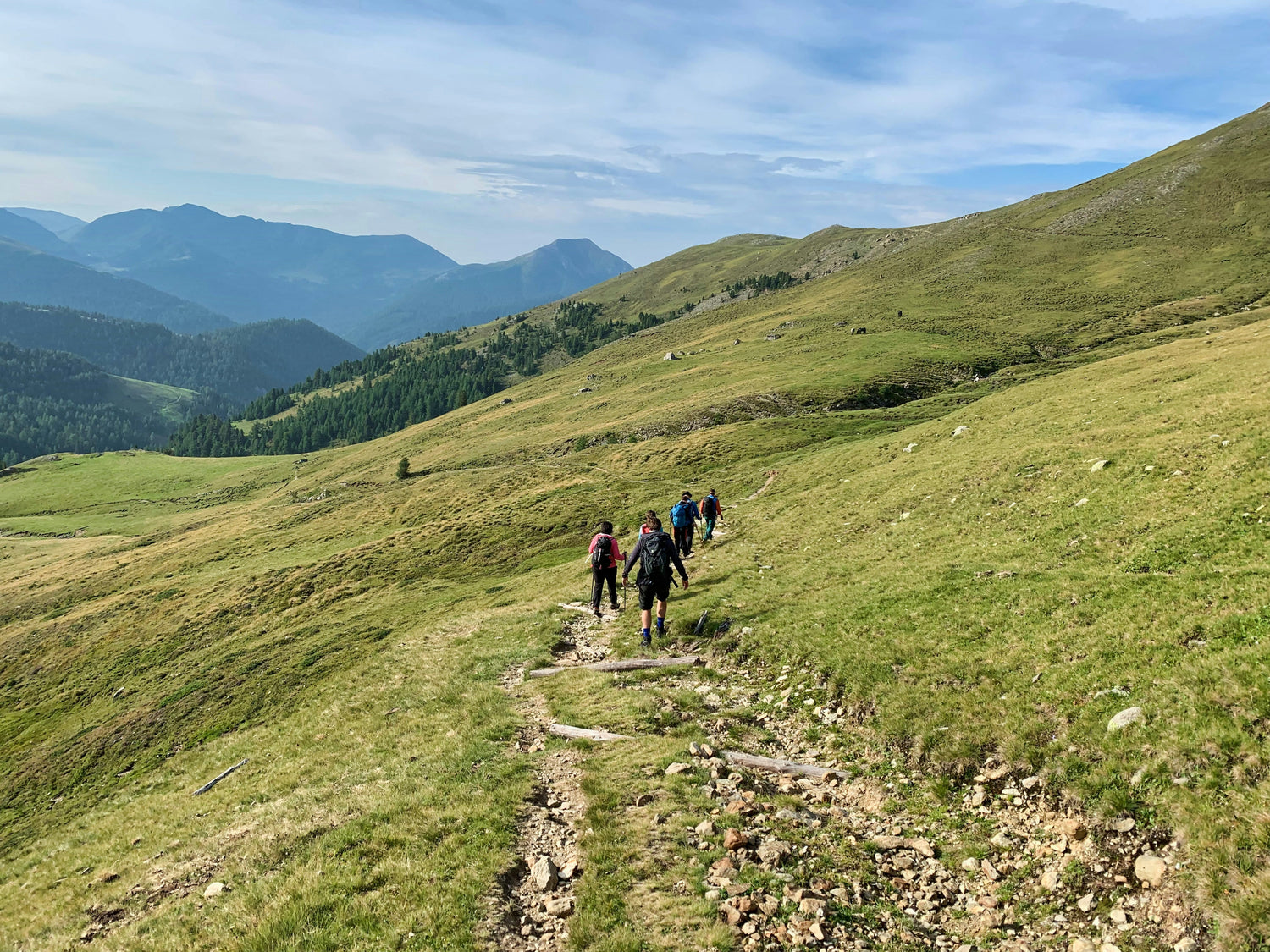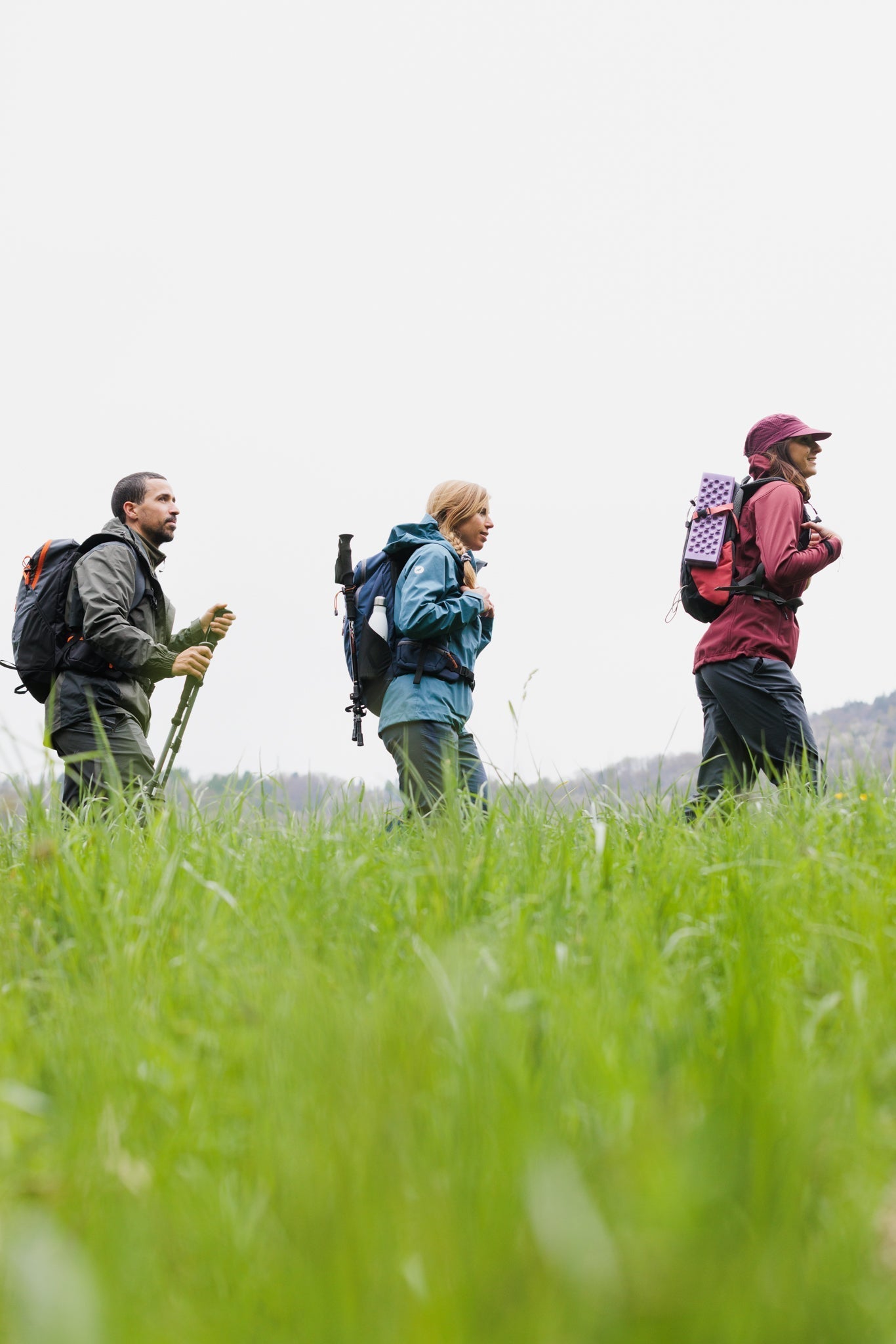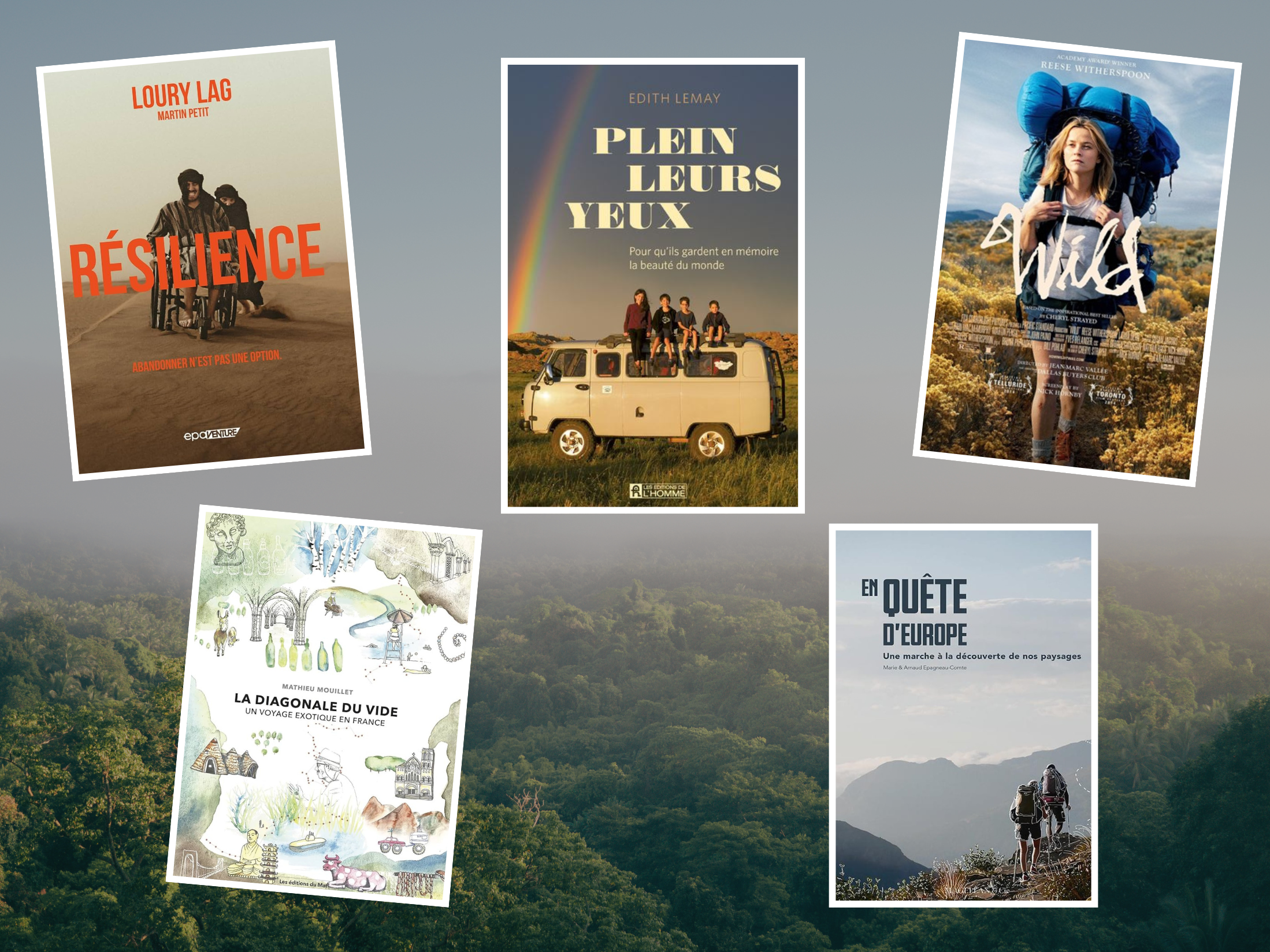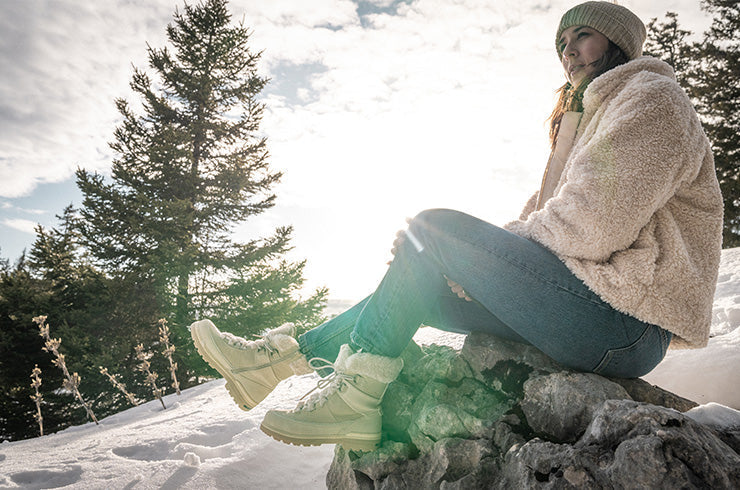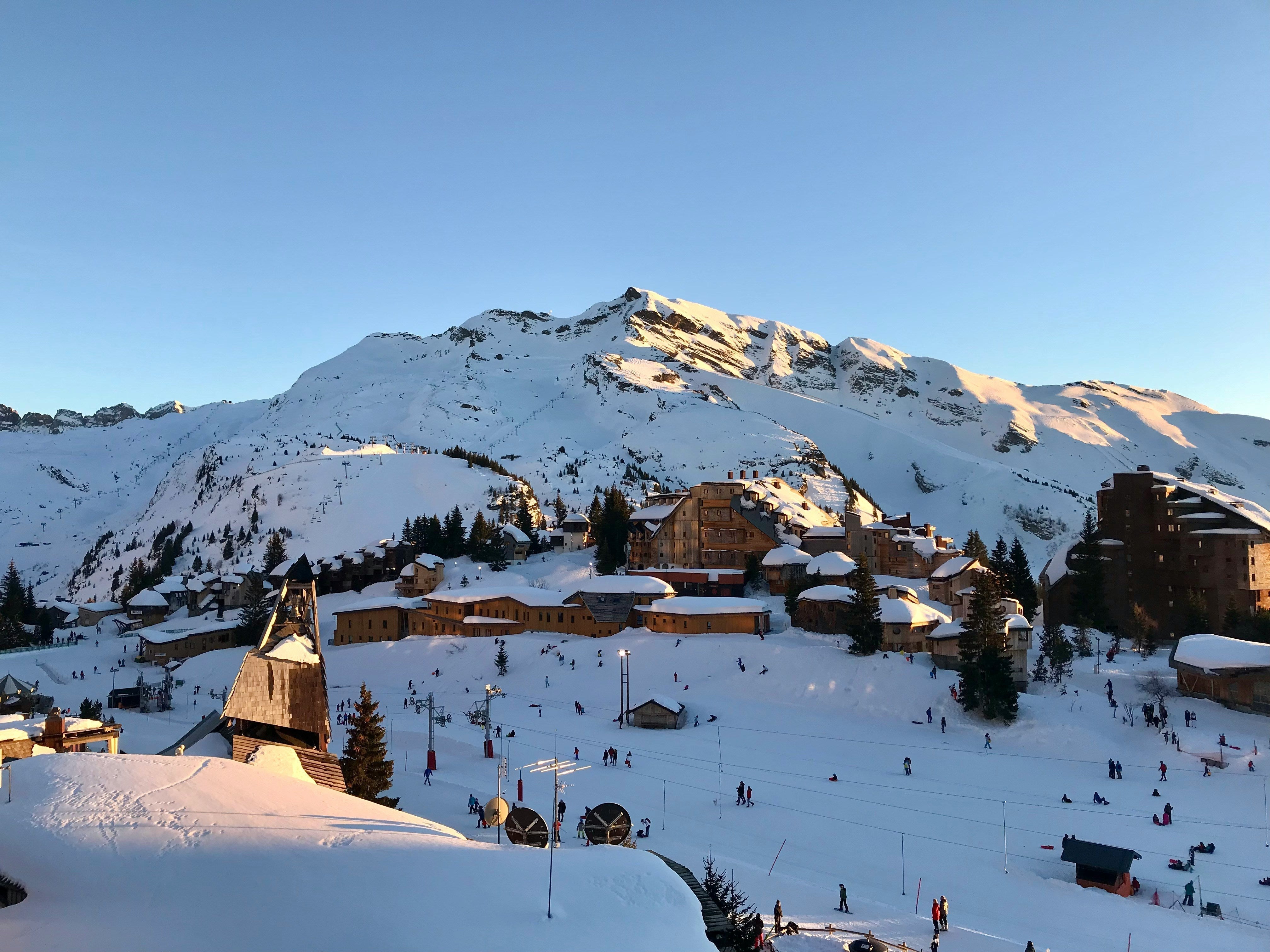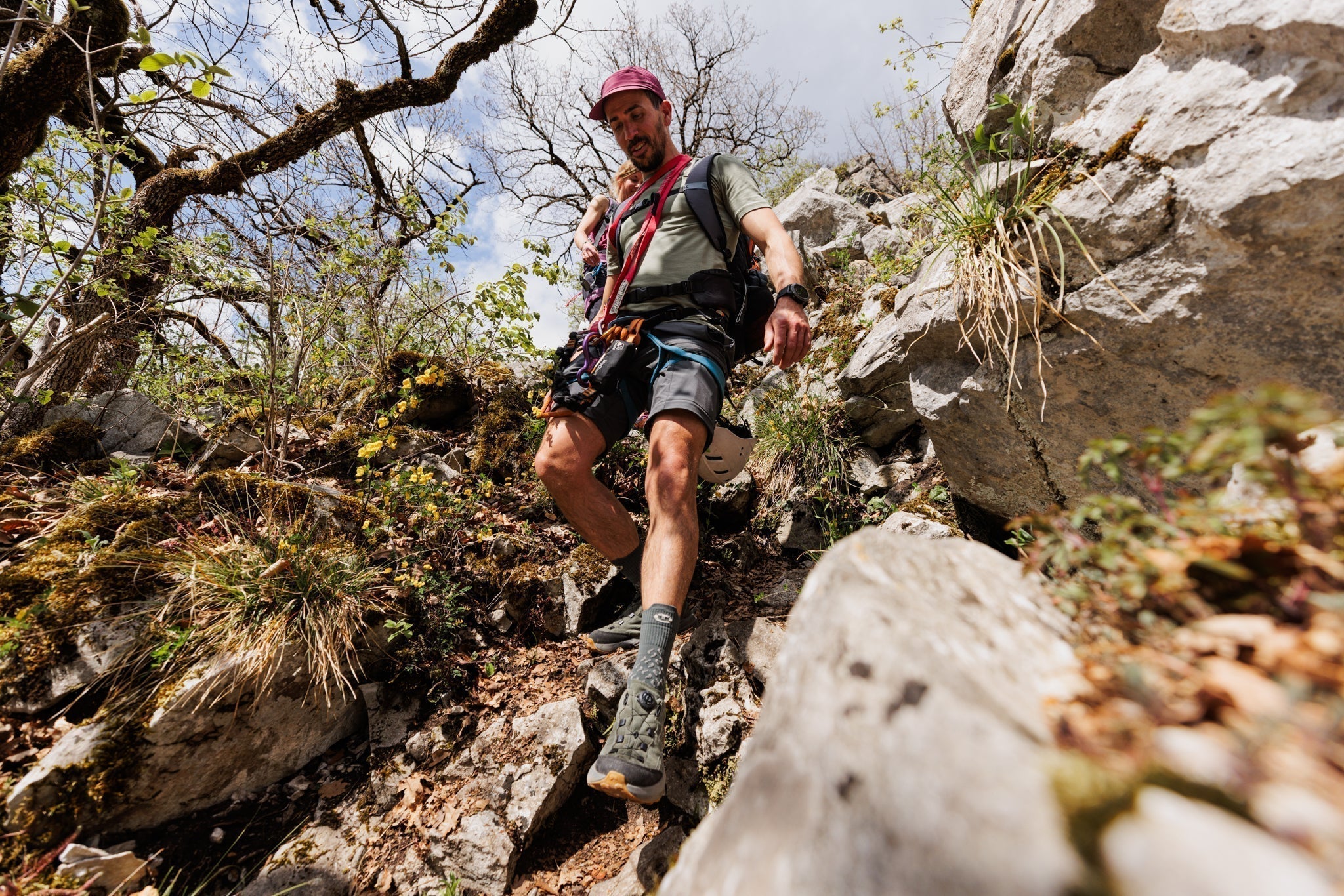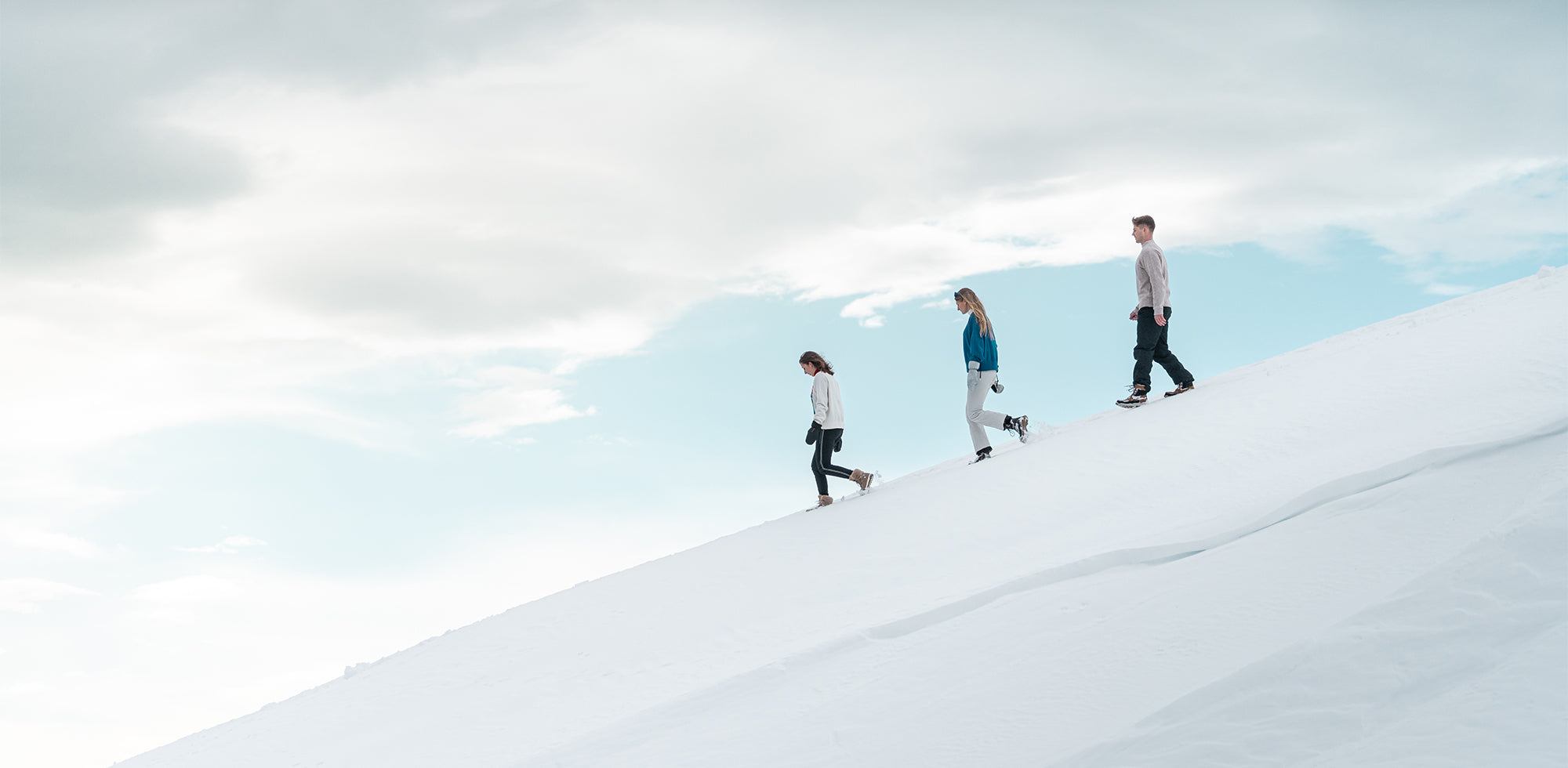Every year, mountain rescue services respond to more than 8,000 accidents. In 2023, 63% occurred in sunny and hot weather.
The sun, prolonged exertion, lack of shade, and sometimes insufficient hydration create an ideal breeding ground for heatstroke. And contrary to popular belief, the mountains don't always offer the cool, protective feeling.
This guide gives you the right reflexes to prepare for your outing, limit the risks and know what to do if someone shows the first signs.
Something to enjoy hiking, even when the temperature rises.
Heatstroke while hiking: why it's a real risk
You risk heatstroke when your body can no longer release heat produced by exertion, especially in hot and humid weather. This can cause your core temperature to rise above 40°C, triggering a medical emergency, and even leading to organ failure.
What is heat stroke and why does it occur?
Heatstroke is a severe form of hyperthermia, with a body temperature that rises too quickly and remains too high. It occurs when physical exertion produces too much heat, and your body can no longer dissipate it quickly enough. This can be related to the weather, humidity, lack of hydration, or an accumulation of fatigue.
Heatstroke vs. sunstroke: what’s the difference?
Heatstroke generally affects the head (direct exposure to the sun). Heatstroke affects the entire body. Of the two, heatstroke is the most dangerous. A simple case of heatstroke (mild dehydration, fatigue) can become an emergency if there is a delay in reacting.
Factors that increase risk in the mountains
➜ Altitude: the air is drier there, you breathe faster, you dehydrate faster, and the effort tires you out more quickly
➜ Weather: high heat, high humidity, still air, all of which prevent heat from escaping
➜ Prolonged physical effort: the heat of the effort adds to that of the climate, and your body lets go
➜ Unsuitable equipment: clothing that does not wick away perspiration, bags that are too heavy, lack of water, all of this increases the risk.
Warning signs of heatstroke in hikers
Physical symptoms to watch for
Keep an eye on:
➜ headaches,
➜ dizziness,
➜ intense fatigue,
➜ muscle cramps,
➜ nausea or vomiting,
➜ red, dry or clammy skin,
➜ rapid pulse and breathing,
➜ fever,
➜ or confusion.
These signs indicate that your body can no longer manage heat.
Behavioral Signs: When Your Body Sounds the Alarm
Be alert for any unusual behavior: irritability, confusion, disorientation, aggression, or drowsiness. These are often signs of central nervous system dysfunction. These types of signs often precede an emergency.
Why reacting quickly changes everything
Reacting quickly can prevent your body from slipping into a coma, seizures, or serious organ failure. Quick refreshment, fresh water, stopping exercise, and seeking shade may be enough to stabilize the situation before it escalates.
Preventing heatstroke while hiking: good habits before and during
Choose the right time and adapt your route to the weather
Choose an early morning or late afternoon departure. You'll walk when it's cooler, limiting the hours when the heat is strong.
Check the weather forecast before you set off. Avoid routes exposed to the sun during the hottest hours of the day. Instead, choose shaded areas or trails with water points .
Hydrate regularly: how much to drink and how often
A reasonable baseline of 2 to 3 liters of water per day is recommended. While walking, drink between 0.5 and 1 liter per hour. In very hot weather, increase to 1.5 L/h.
Opt for small, frequent sips. If you sweat a lot or walk for a long time, switch to a drink with sodium or carbohydrates to compensate.
Eat well to maintain your energy
Bring easy-to-digest and nutritious snacks: dried fruit, cereal bars, nuts. They keep your blood sugar stable and delay exhaustion. If the hike is long, consider drinks or snacks with sodium to keep your minerals in place.
Dress smart to limit overheating
Breathable technical textiles
Opt for fabrics like polyester, merino, or technical blends that wick away sweat. They dry quickly, prevent irritation, and help keep you cool. Avoid cotton in hot weather; it retains moisture and doesn't cool you down.
Essential head and neck protection
A cap or wide-brimmed hat protects you from the sun and prevents your head from overheating. A bandana or damp cloth around the back of your neck quickly cools you down. This is a simple but effective measure.
Take strategic breaks in the shade
As soon as you see a cool spot, stop. Move to the shade and take off your hat or damp t-shirt to dry off. This helps your body better manage the heat.

Equipment and accessories to limit the risk of heat stroke
Lightweight and breathable shoes
Choose shoes that wick away heat and moisture. Models like TODORKA , MUTIS , or PEAKHIKER offer a good compromise between lightness, grip, and breathability.
Caps, hats and UV protection
A wide-brimmed cap or lightweight hat helps protect your head and neck from the sun. They limit direct exposure and help keep you cool.
Backpack with water pocket or insulated bottle
A water pouch in the bag , with a pipette, allows you to drink without interrupting your exercise. Practical for maintaining constant hydration. It often stays cooler, thanks to its location against the back.
An insulated bottle , preferably stainless steel, keeps water cool for several hours, without taste transfer. Perfect for avoiding lukewarm sips in the sun.
Other essentials
✔ Sunglasses, to avoid eye strain.
✔ Sunscreen with suitable filter (face, neck).
✔ Damp towel or bandana within reach: Place on the back of the neck to refresh quickly.
✔ Lightweight walking poles : they reduce physical effort, therefore internal heat.
What to do in case of heatstroke while hiking
Life-saving actions before help arrives
Move the person to the shade or a cooler area. Remove or loosen damp or tight clothing. Have them lie down or sit, whichever is most comfortable for them. Offer small sips of water or an electrolyte drink if you have it with you.
How to quickly cool the person down
Moisten the skin with cool cloths or water, targeting the forehead, neck, armpits, and groin. If you can, use a fan, spray, or water source (river, filled tarp) to lower the temperature. Stay by your side and monitor your condition.
When to call 112 and what information to give
Call for help if the condition does not improve quickly, or if the person becomes confused, drowsy, loses consciousness, or has seizures.
Clearly indicate: your precise position, the symptoms observed (confusion, high temperature, convulsions, etc.), and the actions already taken (cooling, hydration, breaks).
Prepare for your next outing with the right equipment
The heat shouldn't ruin your hike. Check the weather forecast, set out during the cooler hours, bring plenty of water, and choose breathable gear to enjoy your hike without suffering from the high temperatures.
If you are looking to optimize your preparation, we also recommend that you take a look at our articles on:
➜ Zero waste picnic: the complete guide for your hikes and nature getaways
➜ Everything you need to know to choose the right hiking poles
➜ Children's hiking shoes: how to choose the right ones?
So you can leave with peace of mind, whatever the conditions.
Choose your way.

